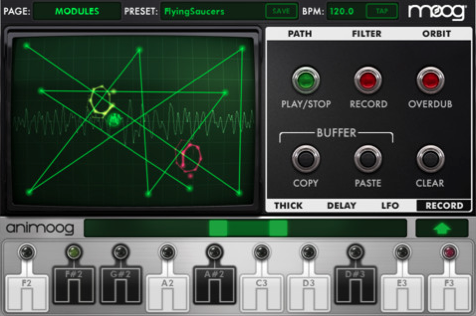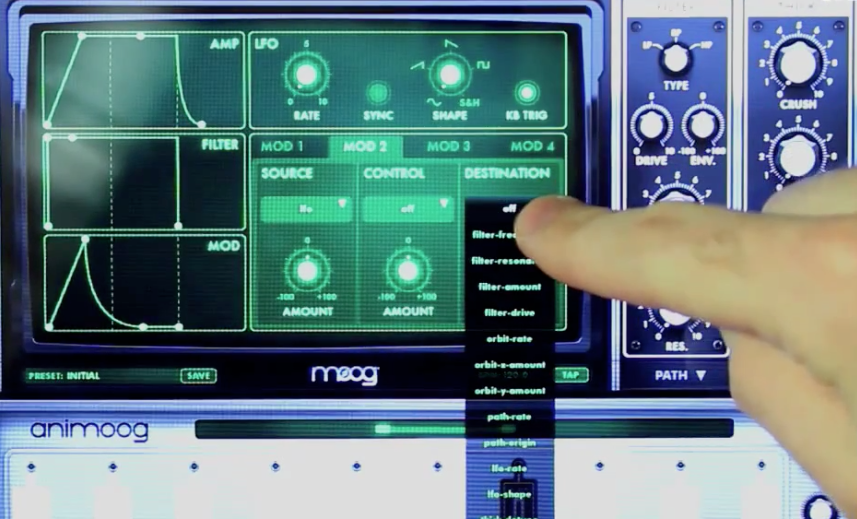Moog Music Inc. has dropped the price of its popular Animoog synthesizer apps for iPhone and iPad, to mark the 78th birthday of the late electronic music pioneer Robert Moog.
The iPad version of the feature-rich analog synth emulation is available right now at the App Store for $9.99 (regular price $29.99), and the scaled-down iPhone version is just $0.99 (regular price $9.99).
The steep discounts are in effect for one week, May 23rd through May 29th. The special pricing celebrates the May 23 birth date of Moog Music founder Bob Moog.
Animoog is highly regarded as one of the most usable, fun, and great-sounding synth apps available for iOS devices. In particular, the iPad version with its multitouch control surface capabilities has gained a lot of traction amongst pros and serious home musicians.
On the other hand, the depth and complexity of the virtual instrument has been daunting for some users with less experience of real analog synthesizers. If you are in this category, make sure you take advantage of the many excellent online tutorials for Animoog, provided free by Moog Music and several pro audio training groups (see below for links to some of the best).




